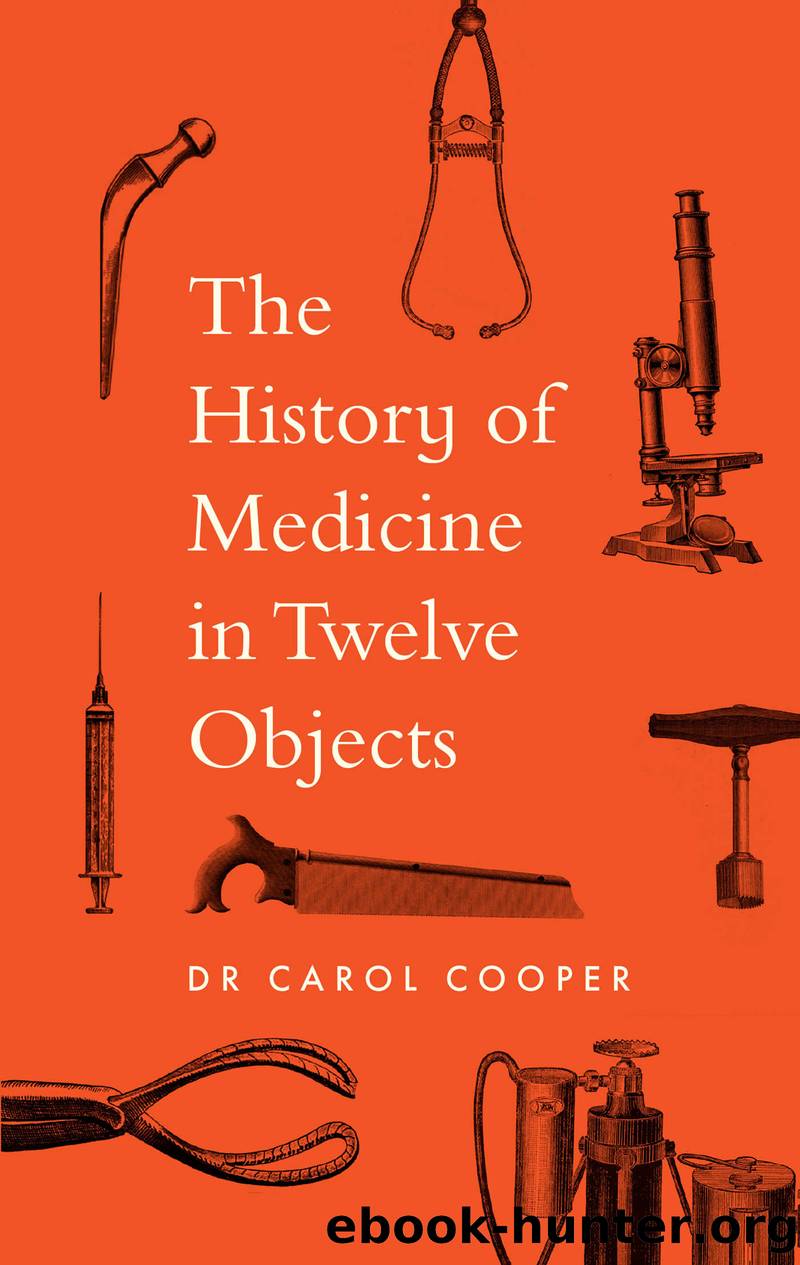The History of Medicine in Twelve Objects by Dr Carol Cooper

Author:Dr Carol Cooper
Language: eng
Format: epub
Publisher: The Quarto Group
Published: 2024-11-15T00:00:00+00:00
As I mentioned earlier in this chapter, the very first blood transfusion was believed to have been carried out on Pope Innocent VIII with the help of some imaginative suturing. However, as the distinguished surgeon and historian Geoffrey Keynes (1887â1982) later pointed out, this so-called transfusion was no more than a draught taken by mouth. It had been prepared from the blood of three healthy boys who then died soon after their donation.
Nobody is quite sure when blood transfusion began. In the seventeenth century in both Paris and London, there were many attempts at transfusing animal blood into humans, and almost as many failures. The whole enterprise was somewhat haphazard. In 1901, however, Austrian immunologist Karl Landsteiner (1868â1943) and his colleagues discovered three ABO blood groups. This made transfusion more scientific, and more successful.
Initially, transfusions had to take place directly from donor to recipient because clotting was a problem. Use of sodium citrate as an anticoagulant in 1914 opened up new possibilities. The First World War brought advances in transfusion, too, thanks to the altruism of donors and the ingenuity of military medics. But there were organizational hurdles. Refrigerating citrated blood meant it could be stored for two to three days. Eventually, adding glucose enabled storage for two to three weeks. Blood banking had arrived.
In 1937, Landsteiner and Alexander Solomon Wiener (1907â76) made another leap forward when they discovered the Rhesus blood group system. This further improved transfusion and also had a positive impact on the pregnancies of Rhesus-negative women.
Blood transfusion became far more feasible towards the Second World War. US surgeon and researcher Charles R. Drew (1904â50) translated test-tube procedures into a technique for mass-producing plasma from whole blood. Plasma is a clear yellow fluid that is rich in protein but does not contain blood cells. During the war, transfusion of plasma instead of red blood cells proved vital because it could restore lost blood volume and provide coagulation factors at the same time. Drew became medical director of the Blood for Britain project, which provided US blood and plasma to British soldiers and civilians. One of the very few African-Americans in his field, he protested against the practice of racially segregating blood donation, which had no scientific basis and was wholly racist. Drew died at the age of forty-five in a car accident. After operating through the night, the exhausted Drew lost control of his car the next morning.
Download
This site does not store any files on its server. We only index and link to content provided by other sites. Please contact the content providers to delete copyright contents if any and email us, we'll remove relevant links or contents immediately.
| Dictionaries & Terminology | Drug Guides |
| Education & Training | Instruments & Supplies |
| Medical Atlases |
Periodization Training for Sports by Tudor Bompa(8168)
Why We Sleep: Unlocking the Power of Sleep and Dreams by Matthew Walker(6618)
Paper Towns by Green John(5087)
The Immortal Life of Henrietta Lacks by Rebecca Skloot(4525)
The Sports Rules Book by Human Kinetics(4288)
Dynamic Alignment Through Imagery by Eric Franklin(4115)
ACSM's Complete Guide to Fitness & Health by ACSM(3987)
Kaplan MCAT Organic Chemistry Review: Created for MCAT 2015 (Kaplan Test Prep) by Kaplan(3939)
Introduction to Kinesiology by Shirl J. Hoffman(3721)
Livewired by David Eagleman(3682)
The Death of the Heart by Elizabeth Bowen(3551)
The River of Consciousness by Oliver Sacks(3535)
Alchemy and Alchemists by C. J. S. Thompson(3448)
Bad Pharma by Ben Goldacre(3354)
Descartes' Error by Antonio Damasio(3229)
The Emperor of All Maladies: A Biography of Cancer by Siddhartha Mukherjee(3063)
The Gene: An Intimate History by Siddhartha Mukherjee(3046)
The Fate of Rome: Climate, Disease, and the End of an Empire (The Princeton History of the Ancient World) by Kyle Harper(3003)
Kaplan MCAT Behavioral Sciences Review: Created for MCAT 2015 (Kaplan Test Prep) by Kaplan(2936)
